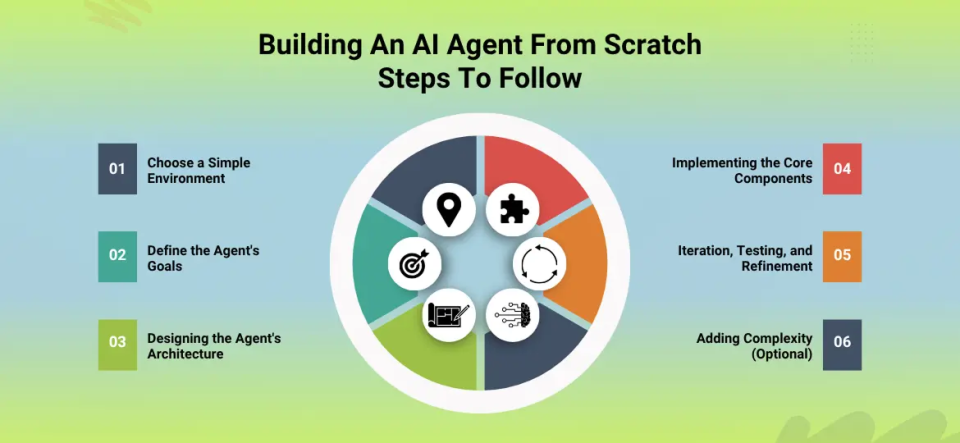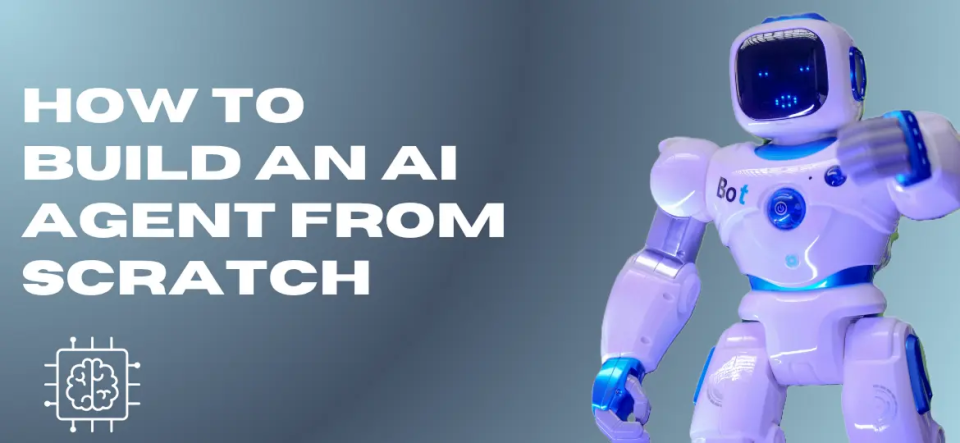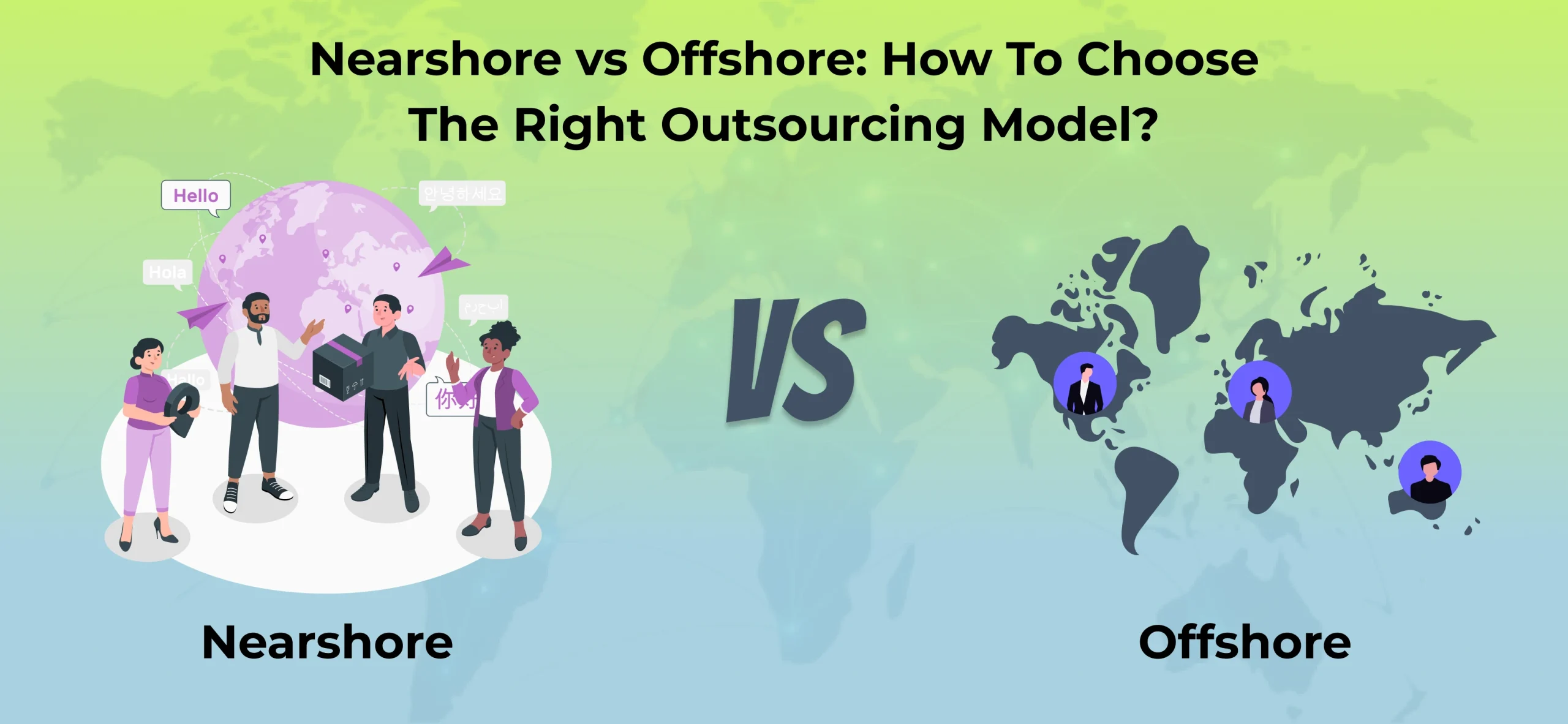At an astonishing speed, technology is evolving around us: AI agents such as ChatGPT and autonomous systems like Siri are revolutionizing industries and daily lives alike. But what exactly constitutes an AI agent? Simply stated, an AI agent senses its environment, makes decisions using knowledge gained through experience, and implements these decisions to accomplish specific goals.
Are you wondering “How Can I Build An AI Agent?” Though many resources exist to assist, building AI agents from scratch provides many unique advantages. First, by learning core AI principles first-hand through making something yourself, you gain deeper insights. Second, customizing the agent exactly to meet your requirements rather than adapting prebuilt solutions; thirdly, providing an incredible learning journey, which will greatly increase technical expertise.
By following this comprehensive guide, we’ll cover the essential steps involved with AI development – everything from defining your agent’s purpose through deployment and monitoring its performance will be covered here. Prepare to embark upon an exciting adventure into AI development!
What is an AI Agent?
What exactly is an Artificial Intelligence agent? At its core, an AI agent is an intelligent entity operating within an environment. To perceive this environment, AI agents use “sensors”, such as cameras or text reader programs, to collect the relevant data for processing by their internal logic or models to make informed decisions, ultimately leading to informed outcomes for decision-making processes.
Next, an agent takes action, using “effectors” to modify its environment – robotic arms, display text on screen or send commands directly. An AI agent’s goal is always clear – whether that means optimizing performance measures like winning games efficiently, completing tasks effectively or making certain observations and then acting deliberately on them. Think of an agent like this as being similar to a smart program which observes, thinks, and then acts deliberately.
At the core of it all lies an essential concept when creating AI agents step by step: the behaviour loop. Understanding an agent architecture design becomes much clearer once you comprehend these key components, such as the perception module, the decision engine, and the action execution unit. Each plays an essential part in helping agents operate intelligently and autonomously within their given world.
Benefits of Building an AI Agent From Scratch
Building an AI agent from scratch offers unique benefits, offering an exceptional learning experience. This hands-on approach brings forth invaluable lessons.
First and foremost, you gain an in-depth knowledge of AI principles. As you gain knowledge of each component and observe interactions among them (data processing, model selection and algorithm tuning), rather than simply using prebuilt tools, this foundational knowledge becomes invaluable when troubleshooting problems effectively and preparing yourself for more complicated AI projects in the future.
Next, creating your agent from scratch allows for unparalleled customization. Pre-packaged solutions may not meet all your exact requirements. When building from scratch, however, you have complete control of its design; every aspect can be tailor-fitted precisely according to your requirements – you have full power over its behaviour as well as its integration seamlessly into existing systems – something hard-pack solutions cannot match up against. This level of precision cannot be reached otherwise!
At its heart, AI development provides an invaluable learning experience that goes far beyond programming alone. Through it, you develop problem-solving abilities; learn critical data analysis; and evaluate model performance accurately. All this not only enhances your technical capabilities significantly but also builds up confidence as an AI developer, becoming a creator, rather than simply a user of this powerful technology.
Building An AI Agent From Scratch

Here are the steps involved in developing AI agents step-by-step. This should serve as a useful guideline for anyone starting their AI agent development tutorial:
Choose a Simple Environment
Start small. Select an easy environment for your first AI agent – such as Tic-Tac-Toe or another text game, for instance – in which to develop. Avoiding complex real-world scenarios will allow you to focus on its core AI logic while significantly decreasing development hurdles – an essential foundational step that lays a solid framework on which you can learn how to build one effectively.
Define the Agent’s Goals
Establish what goals your AI agent should aim to meet before beginning development. Outline what its main aim should be and any actions it should perform within its environment – for instance, game AI’s might aim at winning every match; setting realistic and clear objectives early provides a roadmap to success during later steps of creation.
Designing the Agent’s Architecture
An important step in any AI agent development tutorial is planning the agent’s internal structure. Consider its perception module; what information will it gather from its surroundings; consider its decision-making process; how will it process this information and select its next course of action; plan action execution as to how your agent interacts with its environment and ultimately think through all possible AI agent architecture designs as well as data flows within your system.
Implementing the Core Components
Start coding the planned architecture using Python, as it offers powerful libraries for building AI agents with its wide support. Create separate modules for each component; for instance, perception may handle input reading, decision-making could use simple if-else rules or basic machine learning models, and action execution might involve printing output or moving game pieces – keeping everything modular and clean is best practice!
Iteration, Testing, and Refinement
AI development is never an end-all experience; rather, testing should occur regularly and thoroughly to identify any bugs or unexpected behaviors which require correcting, then fine tune code according to these findings. This cycle is an integral component of creating AI agents step-by-step; each test run provides invaluable learning experiences which enable your agent to become increasingly robust and intelligent over time.
Adding Complexity (Optional)
Once your basic AI agent works reliably, the next step should be adding more sophisticated features. This phase offers opportunities to add sophisticated algorithms or expand its environment with different variables or challenges, and train it for handling more diverse input. This phase provides ample advanced learning experiences while answering “how can I create an AI agent” questions regarding increasingly challenging problems.
Conclusion
Now you have gained all of the skills required to develop an AI agent from scratch. From initial problem definition through deployment and maintenance of the intelligent system, every aspect has been covered here. Remember that AI agent creation is an iterative process; data quality should always come first for success, while continuous improvements and monitoring should ensure long-term effectiveness.
Continue your learning by exploring more complex agent designs. Consider multi-agent systems where multiple AIs interact, as well as more sophisticated techniques for decision making such as reinforcement learning or deep neural nets.
Always bear ethical implications when creating AI agents; consider fairness and transparency whenever possible when designing them; keep informed with recent AI research developments (they change quickly!), and remain up-to-date with AI research advancements – they often occur simultaneously! It’s now your turn: Take these steps towards beginning your AI agent project journey – both challenging yet immensely fulfilling.
Echoinnovate IT‘s experts in cutting-edge AI development offer expert assistance on your journey towards artificial intelligence (AI). From designing custom agents tailored specifically for your unique business requirements to deployment services, no matter whether it be just beginning your AI journey or scaling existing projects up.
Get in touch now to discover more!
How to Build an AI Agent From Scratch
How to Build an AI Agent From Scratch in 2025?
To build an AI agent from scratch in 2025, start by defining your agent’s purpose—such as task automation, customer service, or personalized recommendations. Use advanced language models like OpenAI’s GPT-4o or Anthropic’s Claude for natural language capabilities. Choose a development framework (Python, Node.js, or mobile SDKs like Swift for iOS or Kotlin for Android). Integrate APIs for NLP, vision, and speech (e.g., Whisper or DALL·E), and deploy on mobile or cloud platforms. Focus on user experience, data privacy, and real-time performance.
Which technologies are best for building AI agents for Android and iOS apps?
For mobile app development in 2025, combine OpenAI API, TensorFlow Lite, or Core ML with your mobile framework (Swift for iOS, Kotlin or Flutter for Android). These tools support on-device AI, voice recognition, and real-time processing. Use GPT-4o for conversational agents and Whisper for speech-to-text functionality. Cloud services like AWS, Firebase, or Azure can help with storage, deployment, and scaling.
What are the key components of a successful AI agent?
A successful AI agent includes these core components:
Intent recognition (understanding what the user wants)
Context management (remembering user interactions)
NLP engine (e.g., GPT-4, Claude)
Action logic (executing tasks or responding intelligently)
User interface (mobile-friendly, voice or text)
Data privacy & security (compliant with GDPR/CCPA)
When integrated correctly, these components enable intelligent, human-like interactions across Android, iOS, and web platforms.
Can I build an AI agent without machine learning expertise?
Yes, thanks to no-code and low-code AI platforms in 2025, you can build functional AI agents without deep ML knowledge. Tools like OpenAI’s Assistants API, Zapier AI, and Microsoft Copilot Studio allow you to create conversational agents, automate tasks, and integrate AI into mobile apps easily. For custom applications, partnering with an experienced mobile app development company ensures technical accuracy, scalability, and compliance with best practices.



